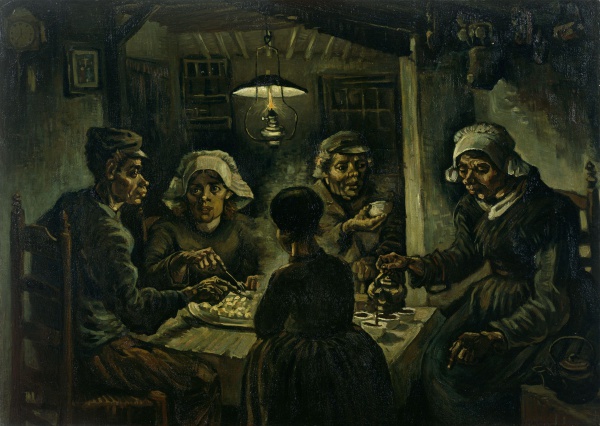Facts About The Potato Eaters
"The Potato Eaters" is a celebrated oil painting by Vincent van Gogh, created in April 1885 while he was in Nuenen, Netherlands. Today, the painting is proudly displayed at the Van Gogh Museum in Amsterdam, with the original sketch housed at the Kröller-Müller Museum in Otterlo. Additionally, Van Gogh made lithographs of the image, which are part of collections like the Museum of Modern Art in New York City. This piece is widely regarded as one of Van Gogh's masterpieces.
Van Gogh aimed to portray peasants authentically in "The Potato Eaters." He deliberately chose rough, unrefined models to capture their natural and unspoiled characteristics. Despite receiving initial criticism from his friend Anthon van Rappard, Van Gogh considered this painting his finest work. He drew inspiration from Belgian painter Charles de Groux's religious-themed piece, "The Blessing Before Supper."
Before finalizing "The Potato Eaters" Van Gogh experimented with the composition by creating a lithograph, showcasing his interest in graphic media. While Van Gogh is often associated with Post-Impressionism, his artistic roots were influenced by Hague School artists, such as Anton Mauve and Jozef Israëls.
The painting has had its share of drama. Several versions of "The Potato Eaters" have been stolen over the years. Notably, an early version titled "Weaver's Interior" and "Dried Sunflowers" were stolen from the Kröller-Müller Museum in 1988. The final version of "The Potato Eaters" was also stolen from the Vincent van Gogh National Museum in 1991 but was quickly recovered when the thieves' getaway car suffered a flat tire.
Through its raw and honest depiction of peasant life, "The Potato Eaters" remains a significant piece in art history, showcasing Van Gogh's dedication to portraying the realities of working-class existence.

 Belgium
Belgium